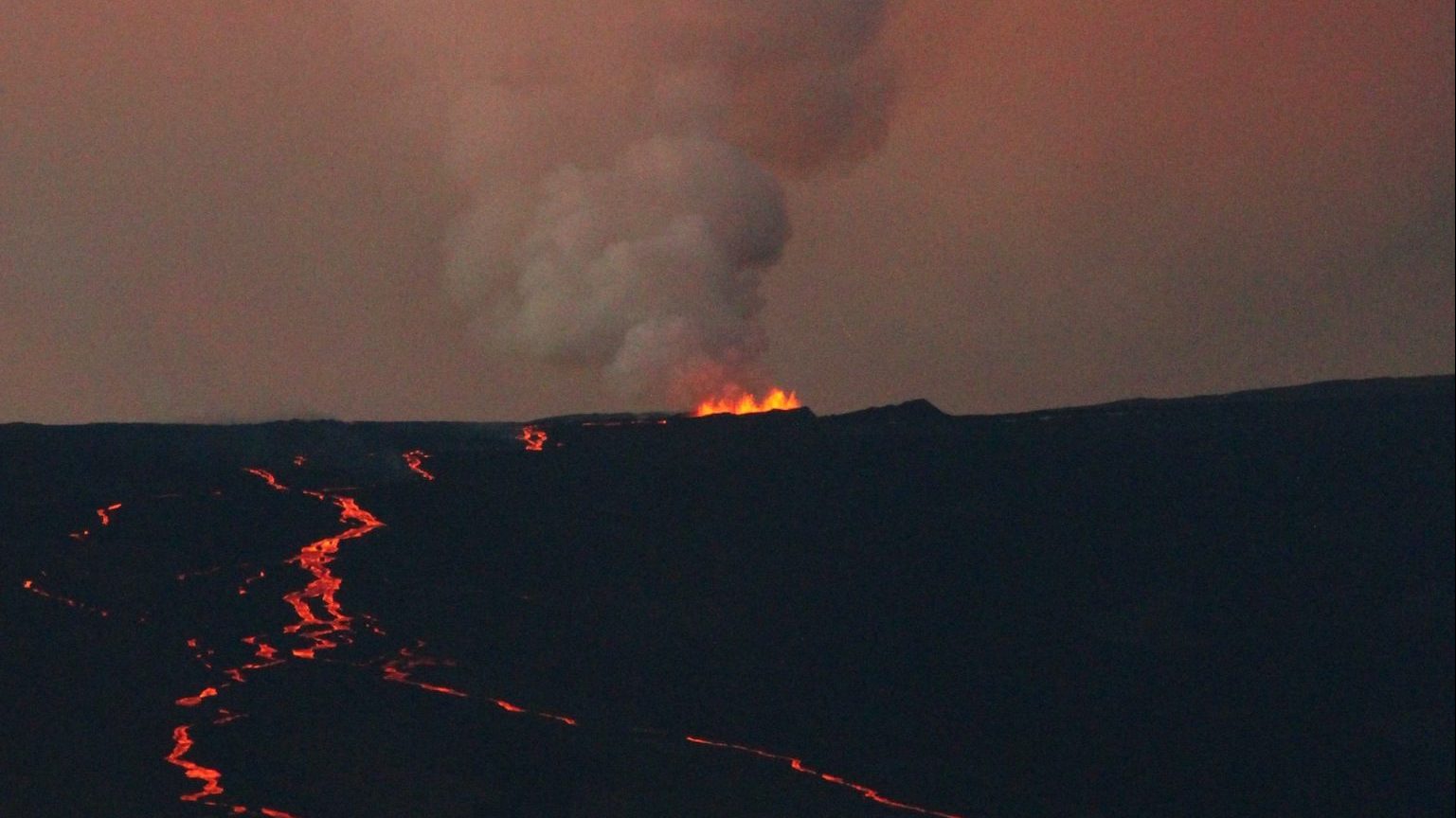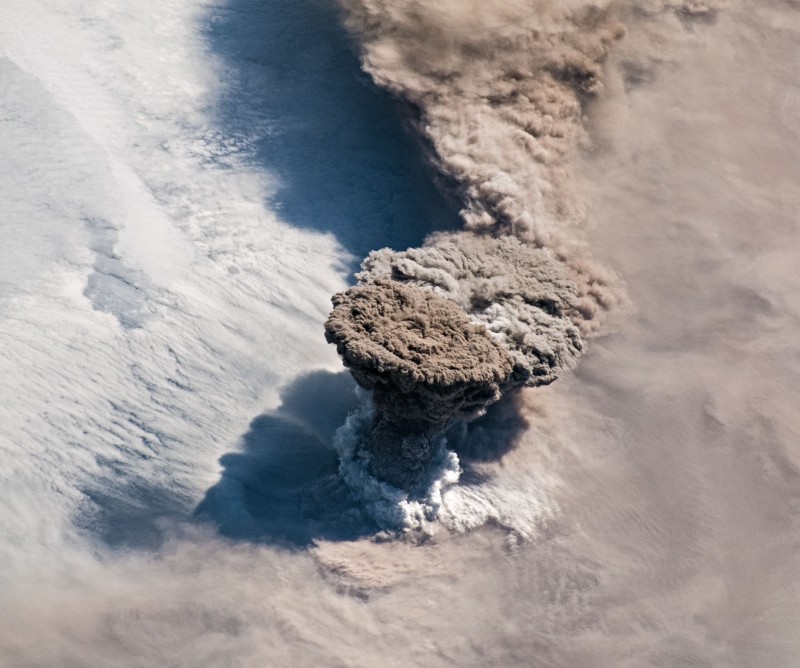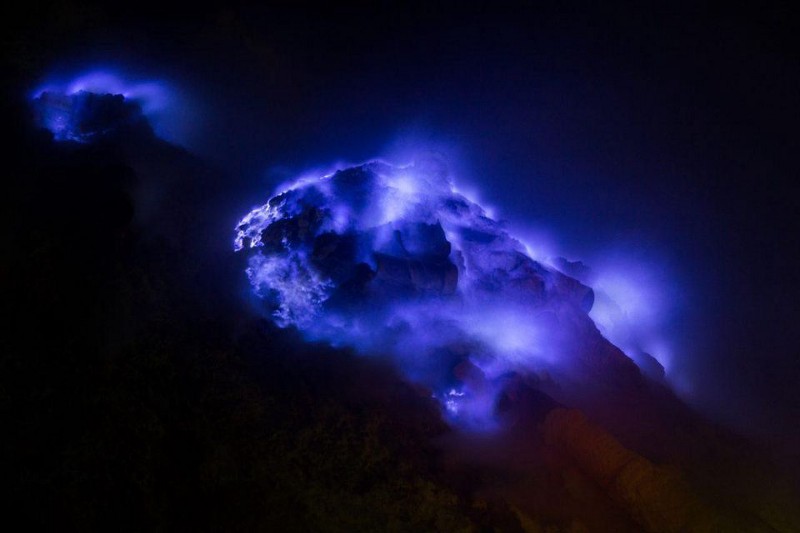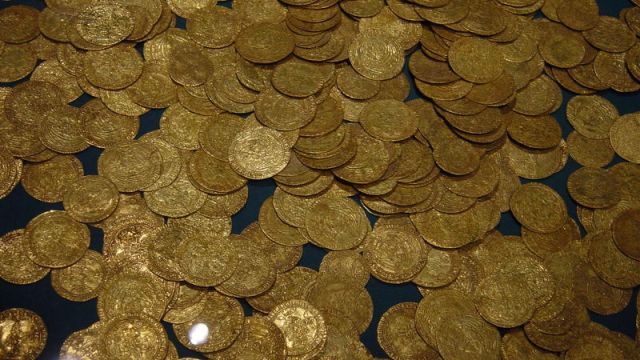Dissecting the Nabro lava flow from space
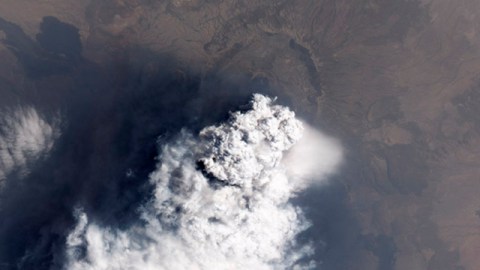
We’ve been getting bits and pieces of the lava flow from Nabro for the past few weeks, but some images from earlier this week reveal the full reach of the flow from vent to snout. It appeared yesterday that the eruption might have ended, but today small plumes can still be seen on the Aqua/MODIS images. Now, after the little sojourn the other day, I don’t think I’ll revisit the messy math of viscosity, but we can see a lot of detail in the Nabro lava flow to give us some clues about the activity at the volcano.
The NASA Earth Observatory posted a number of new images of the Nabro lava flow from June 29, one visible light and one thermal IR image, both from the ALI on EO-1. Let’s start with the visible light images – some details I noticed (see below).

ALI image of Nabro taken on June 29, 2011. Image courtesy of the NASA Earth Observatory. Click here to see a larger version.
Starting near the vent, the first thing that stands out is that the main lava flow (there appear to be several) is not issuing from the crater at the top of the small tephra cone, but rather the base. This is a common feature in scoria/cinder cone eruptions, remember that tephra cones are made of loose debris from the explosive portion of the eruption, so it is easy for lava to breach the base and erupt there. The first few kilometers of the main lava flow look like a network of overlapping lava flows, almost like a braided river. Remember, you can talk about the features of lava flows a lot like rivers – they’re both “fluids” moving over the surface. As the flow reaches the edge of the Nabro caldera, it takes that sharp bend and becomes much more channelized, either because the land has a steeper slope there or there was a pre-existing canyon for the lava flow to exploit. In either case, the lava flow becomes strongly channelized and some very prominent lava flow levees (see examples of prominent levees at Bagana here) appear, with only the middle of the flow having the active lava.
As the lava flow reaches the flatlands, it spreads out into a delta-like feature (again, much like when a river reaches the sea). The flow is no longer channelized but instead extends in many little flow lobes in all directions to make the broad volcanic delta (although I guess seeing it spreads out on land, would you call it a volcanic alluvial fan?)
When looking at the thermal IR image (see below), I was struck that, much like we see in Hawai`i, there is likely a transition that occurs along the flow. Near the vent and in places where the lava flows fastest thanks to being channelized and somewhat thermally insulted by levees and the roof crust (that shows up darker on the IR image), the lava might be ropey pahoehoe. However, as the images we’ve seen can attest, the lava in the delta area is rubbly a`a. This transition from pahoehoe to a`a is commonly seen at Kilauea where lava goes from a channel to open, flat land. If the lava flow stayed pahoehoe, it might have traveled further than the ~15 km reach of the flow, but the conversion to a`a slowed it down significantly. (This transition likely didn’t help my calculation of viscosity from the other day.)

Thermal IR image of the Nabro flow from EO-1. Image courtesy of the NASA Earth Observatory.
Now that we’ve gotten an almost entirely clear view of the Nabro eruption, it seems pretty clear that it is a basaltic scoria/cinder cone eruption – something like 1943-52 eruption of Paricutin in Mexico. The large explosive component likely betrays a higher water content to the magma, but the lava flow morphology and tephra cone are all typical of monogenetic (limited activity) eruption in the Nabro volcanic field.
Top left: June 27, 2011 image of the steam and ash plume from Nabro. Image courtesy of the NASA Earth Observatory.

